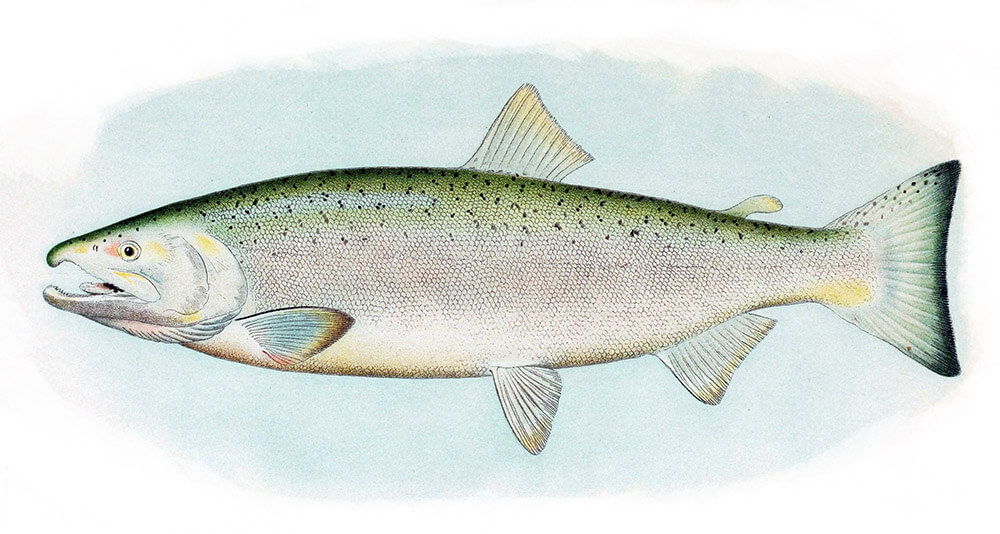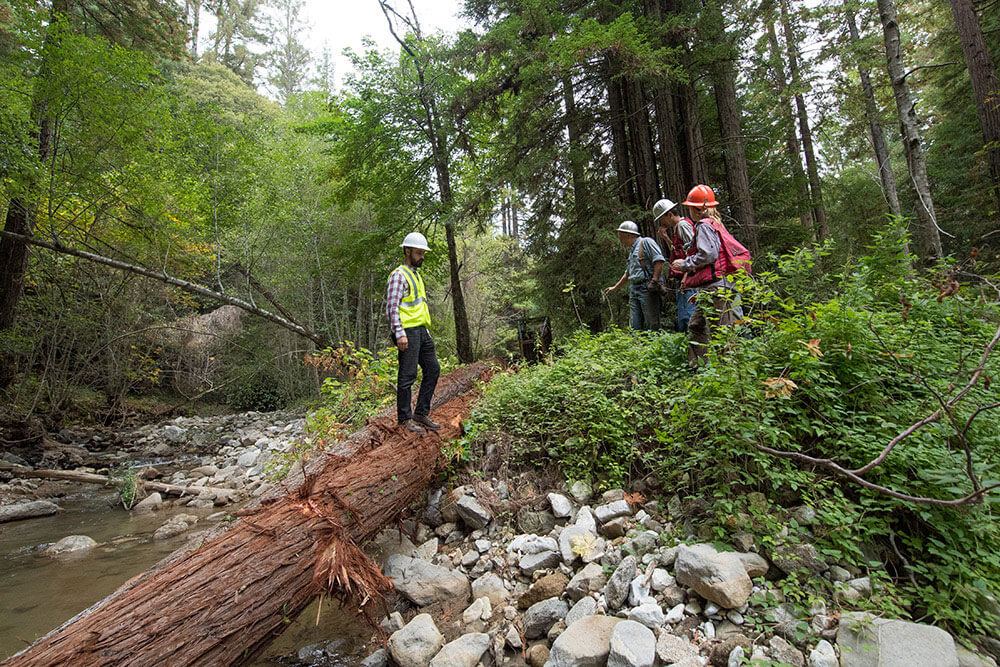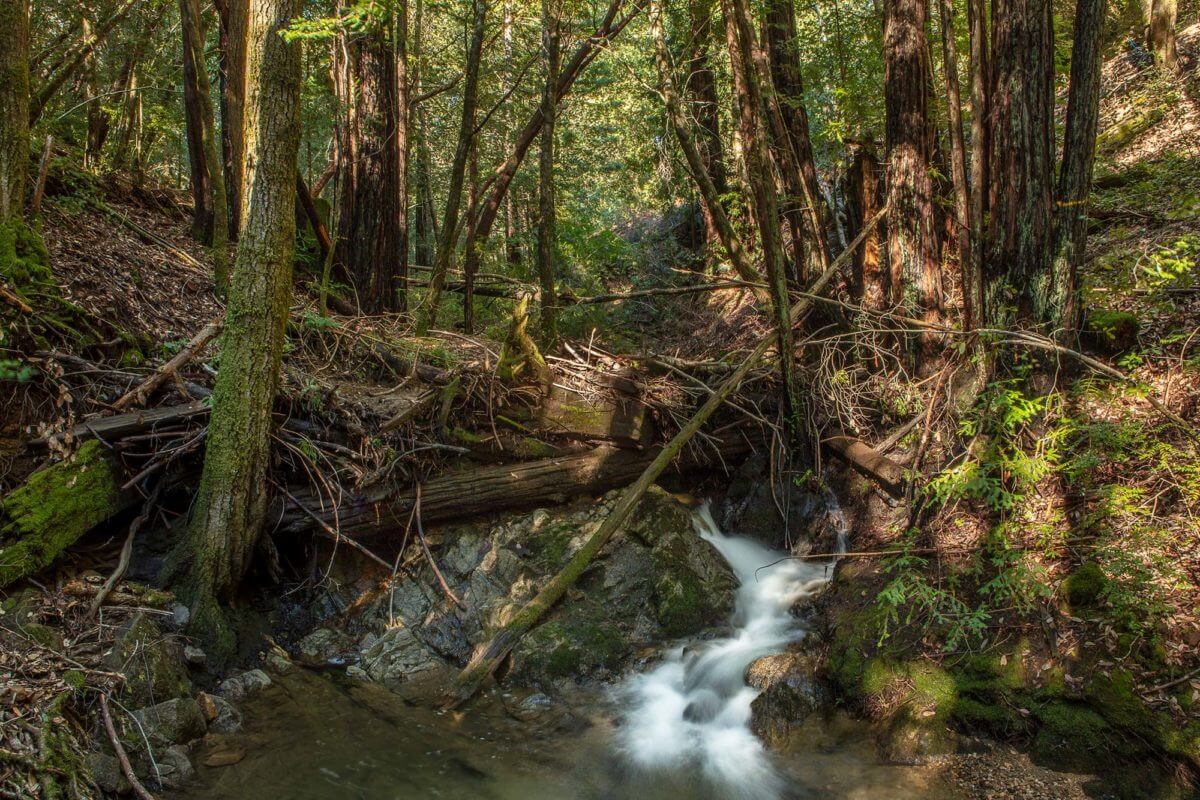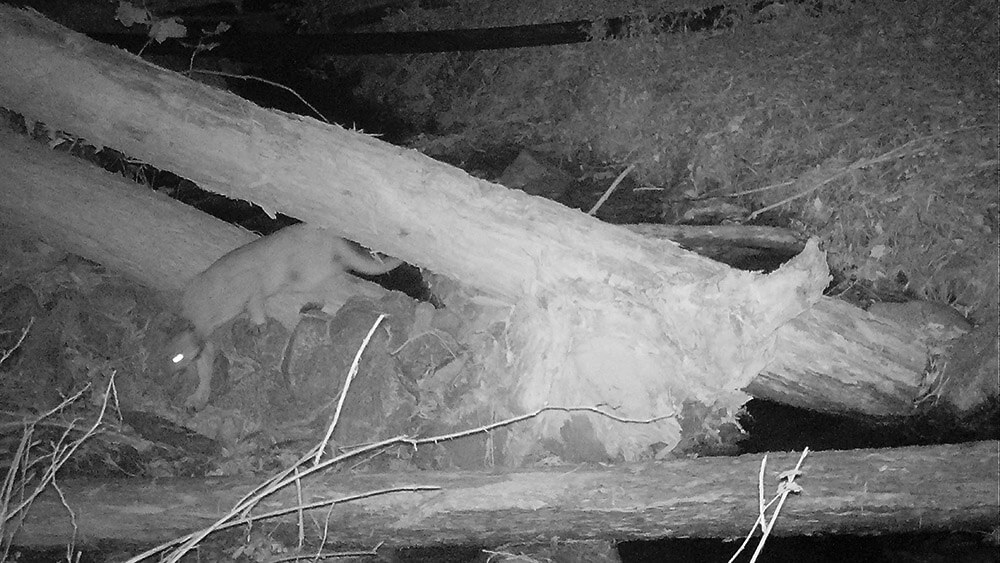Restoring San Vicente Creek to Save Endangered Salmon
Fish at Risk
 Coho salmon and steelhead trout are anadromous fish, meaning that they live part of their lives in freshwater and the other part in the salt water of the ocean. Amazingly, even after multiple years feeding and growing in the open ocean these fish nearly always return upstream to lay their eggs in the same place where they were hatched.
Coho salmon and steelhead trout are anadromous fish, meaning that they live part of their lives in freshwater and the other part in the salt water of the ocean. Amazingly, even after multiple years feeding and growing in the open ocean these fish nearly always return upstream to lay their eggs in the same place where they were hatched.
Erosion from logging and mining activities over the last 150 years pushed large amounts of sediment into the streams. Combined with barriers to fish passage, overfishing, and habitat degradation, this has led to a steep decline in the salmon population.One key component in this was the large-scale removal of wood in stream channels.
Re-engineering Streams
 Now a “large woody debris” project is underway to restore the regionally important San Vicente Creek in the Santa Cruz Mountains as a thriving fish habitat. Large woody debris, or LWD for short, may seem like an odd stewardship tool, but it’s an important and increasingly common stream restoration technique.
Now a “large woody debris” project is underway to restore the regionally important San Vicente Creek in the Santa Cruz Mountains as a thriving fish habitat. Large woody debris, or LWD for short, may seem like an odd stewardship tool, but it’s an important and increasingly common stream restoration technique.
LWD projects involve strategically placing trees or large limbs into the water to mimic natural conditions. In the past, trees that had fallen into creeks were removed for a number of reasons, in many cases to control for flooding and allow easier boat passage, but in some areas LWD was even cleared to allow oxen to move logs in dry creek beds in late 19th and early 20th century clear cut logging.
For many years and even to this day, projects frequently remove LWD to try to benefit and beautify stream habitat under the misconception that it is harmful, but we now know that it serves an important purpose and over the last few decades it has become a focus of stream restoration.
How does large woody debris help fish?
 Here are three key ways large woody debris make a difference in the life cycles of fish:
Here are three key ways large woody debris make a difference in the life cycles of fish:
- It creates habitat where fish can hide from predators in the shadows of the logs.
- The wood slows down the water flow creating large pools that young fish love, and also traps gravel and sediment that are key for spawning grounds.
- LWD spreads water out over the historic floodplain creating a larger habitat for winter refuge for the fish while increasing food sources.
Along San Vicente Creek, 38 trees were felled and adjusted for optimal function. Along with creating fish habitat, the thinning also allows the remaining redwoods to grow larger and healthier. The quality of the creek habitat will be measured over a number of years to see how well the project performs.

Learn more about our work to improve habitat for coho salmon, and other critical and iconic wildlife we support by protecting redwoods.